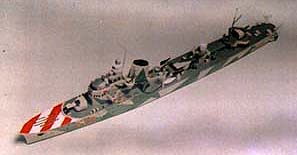
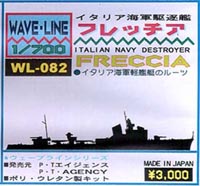 Laid
down in 1929, the four ships of the Freccia Class - Dardo, Freccia, Saetta
and Strale - were basically enlarged versions of the earlier Turbine Class
(which were improved Sauro Class), with increased speed and range to accompany
the new cruisers that were joining the fleet.
Laid
down in 1929, the four ships of the Freccia Class - Dardo, Freccia, Saetta
and Strale - were basically enlarged versions of the earlier Turbine Class
(which were improved Sauro Class), with increased speed and range to accompany
the new cruisers that were joining the fleet.
On trials they reached speeds of 38-39kts, however in practice they were unable
to attain such speeds due to machinery problems and poor sea-keeping, both
of which limited top speed to 30kts. Armament consisted of 4 x 120mm (2 x
2), 2 x 40mm AA (2 x 1), 4 x 13mm and 6 x 533mm Torpedo tubes. Later 13.2mm
and the 40mm guns were replaced with 5 or 6 20mm. At the same time 2 depth
charge launchers were added. During 1942-43 the after torpedo tubes were replaced
by 2-37mm, and 3 twin 20mm added.
None of the class survived the war; Strale was lost after running aground
off Tunisa on 21 June 1942. Saetta was mined on 23 February 1943. Freccia
was sunk on 8 August 1943 following an air raid on Genoa. Dardo was captured
by the Germans and renamed TA31 .. and was later scuttled at Genoa on 24 April
1945
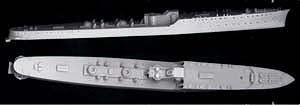 First
thing one sees upon opening the box is how well packaged the various components
are. The hull is in bubblewrap and taped to the side of the box, same with
the other 18 resin parts.
First
thing one sees upon opening the box is how well packaged the various components
are. The hull is in bubblewrap and taped to the side of the box, same with
the other 18 resin parts.
As with other Waveline kits the resin on this is very nice to work with -
soft and easy to carve, not brittle at all. The hull has most fittings moulded
on, however the various vents could stand replacement. 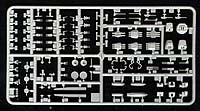
The bridge is interesting in that you are given two choices - a rounded front,
or a flat fronted design. I don't know which is for which ship or when the
changes was made if one is a 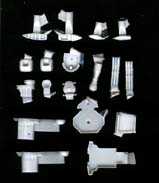 modification
of the other and would welcome any input here.
modification
of the other and would welcome any input here.
Resin detail parts provided include: director, turrets, torpedo tubes, boat.
The platform that one of the directors sits on appears to actually be on legs,
but is provided as a solid structure, so the legs will need to be scratchbuilt,
or the structure suggested by paint.
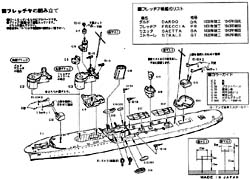 A
sprue from one of Skywave's IJN Detail sets is provided and you are supposed
to make use of the davits and various guns (suitably modified of course).
Also included is a piece of brass rod for the masts. No PE is included.
A
sprue from one of Skywave's IJN Detail sets is provided and you are supposed
to make use of the davits and various guns (suitably modified of course).
Also included is a piece of brass rod for the masts. No PE is included.
The instructions are in Japanese, but this is no problem as it shows all parts
as well as a large size exploded drawing giving locations for all components.
Additionally a side and top profile are also provided. No painting information
is included, although a photo of the completed model shows the typical Italian
camouflage and the red/white air recognition stripes on the bow.
Conclusion: When done this will make a most attractive little addition to
one's 1/700 destroyer collection. My thanks to HobbyLink
Japan for the review sample
Copyright © SMML 2003